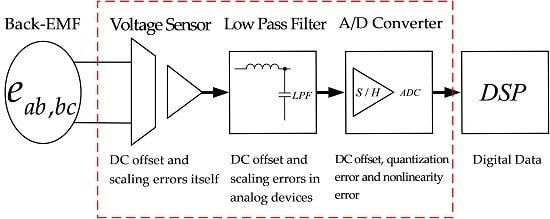A Back-EMF Estimation Error Compensation Method for Accurate Rotor Position Estimation of Surface Mounted Permanent Magnet Synchronous Motors
Abstract
Share and Cite
Jung, T.-U.; Jang, J.-H.; Park, C.-S. A Back-EMF Estimation Error Compensation Method for Accurate Rotor Position Estimation of Surface Mounted Permanent Magnet Synchronous Motors. Energies 2017, 10, 1160. https://doi.org/10.3390/en10081160
Jung T-U, Jang J-H, Park C-S. A Back-EMF Estimation Error Compensation Method for Accurate Rotor Position Estimation of Surface Mounted Permanent Magnet Synchronous Motors. Energies. 2017; 10(8):1160. https://doi.org/10.3390/en10081160
Chicago/Turabian StyleJung, Tae-Uk, Jung-Hoon Jang, and Chang-Seok Park. 2017. "A Back-EMF Estimation Error Compensation Method for Accurate Rotor Position Estimation of Surface Mounted Permanent Magnet Synchronous Motors" Energies 10, no. 8: 1160. https://doi.org/10.3390/en10081160
APA StyleJung, T.-U., Jang, J.-H., & Park, C.-S. (2017). A Back-EMF Estimation Error Compensation Method for Accurate Rotor Position Estimation of Surface Mounted Permanent Magnet Synchronous Motors. Energies, 10(8), 1160. https://doi.org/10.3390/en10081160





